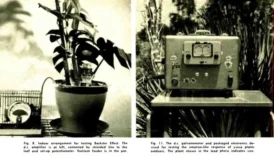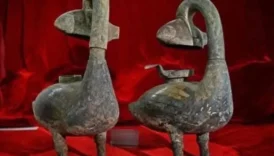Isaac Newton: The Last of the Magicians
Isaac Newton questioned the falling apple, unlocking the universe’s secrets. He was a giant of science but also believed in alchemy and prophecy. Here are the unknown sides of the genius and “last magician.”
- Isaac Newton: The Last of the Magicians
- The Secret of the Apple and the Power of Science
- A Stormy Beginning: Birth, Family and Early Years
- Cambridge, the Plague and the 'Annus Mirabilis'
- The Colors of Light, the Telescope and Scientific Conflicts
- Newton's Secret World: Alchemy, Prophecies and Anti-Trinitarianism
- Principia Mathematica: The Book That Changed the History of Science
- Power, Feuds and the Mastership of the Mint
- The South Sea Bubble, Final Years and Immortal Legacy
- Final Thoughts
- Bibliography

The Secret of the Apple and the Power of Science
Woolsthorpe, Lincolnshire – Perhaps millions saw apples fall from trees. But only one, young Isaac Newton, stopped and asked: “Why?” This simple question ignited a revolution that laid the foundations of modern science.
Newton’s curiosity reflects the essence of science: seeking the cause behind the apparent, trying to understand the “how.” Discoveries that seem obvious to us today, like reusable rockets, were once just “why” and “how” questions in someone’s mind. Gravity was the same. Questioning this everyday event, recognizing it as a law of nature, was an event in itself. But Newton went further: he set out to explain the reason and the mechanism of this fall in the language of mathematics.
Science is not just about observing or collecting data. The real skill lies in assembling these observations and data to form coherent theories that explain the workings of the universe. Newton was one of the foremost among those who achieved this. Now, let’s journey into the mind of this extraordinary genius; let’s look closer at his achievements, his darker aspects, and the events that shaped him.
A Stormy Beginning: Birth, Family and Early Years
Isaac Newton was recorded as born on December 25, 1642, in the village of Woolsthorpe, England. However, this was according to the Julian calendar still used in England at the time. According to the Gregorian calendar we use today, his actual date of birth is January 4, 1643. This calendar difference also makes the often-cited fact that he was “born the year Galileo died” debatable. Galileo died on January 8, 1642 (Gregorian), almost a full year before Newton. Nevertheless, Newton believed throughout his life that he had a special destiny.
His birth was also difficult; he was a premature, weak baby. He was named after his farmer father, who died three months before his birth. “Isaac” means “he laughs” in Hebrew. However, Newton was hardly a cheerful person throughout his life.
When he was just three, his mother, Hannah Ayscough, married a wealthy clergyman and left him in the care of his grandmother. This abandonment left deep scars on Newton’s soul. He felt insecure towards his mother and harbored a lifelong hatred for his stepfather. Years later, in a list of sins he kept, he would write that he had “threatened to burn” his mother and stepfather while they were in the house.
At 12, he lodged with an apothecary in Grantham. Here, he developed an interest in the mysterious world of chemistry (especially alchemy) and the apothecary’s stepdaughter. Alchemy would become a lifelong passion. He learned Latin at The King’s School in Grantham. His signature carved into a school windowsill is still visible today.
After his stepfather’s death, his mother wanted to take him out of school to become a farmer. Newton hated the idea. Fortunately, the school’s headmaster, Henry Stokes, intervened, recognizing Newton’s aptitude for science and ensuring he returned to school. Defeating a stronger boy in a fight at school ignited his ambition. His grades improved rapidly, and he gained attention for the sundials and windmill models he built. His character, never backing down from a challenge, began to take shape here.
Cambridge, the Plague and the ‘Annus Mirabilis’
When he entered Trinity College, Cambridge, in 1661, no one knew his future potential. At university, he didn’t limit himself to Aristotle; he also studied contemporary thinkers like Descartes, Copernicus, Galileo, and Kepler. His interest in mathematics and physics grew rapidly.
However, he was critical and stubborn. He initially dismissed Euclid’s “Elements.” Failing an exam in 1664 due to his lack of geometry spurred him on. He studied Euclid again and realized his mistake. Years later, in a letter to Robert Hooke, he would use the famous quote attributed to Bernard of Chartres: “If I have seen further it is by standing on the shoulders of Giants.” (Newton, I. (1676). Letter to Robert Hooke). He had grasped the cumulative nature of science.
Optics, the science of light, began to fascinate him. Just then, in 1665, the Great Plague broke out. The university closed, and he returned to his home in Woolsthorpe. The famous apple tree was in the garden of this house.
According to Newton’s own accounts (via Stukeley and Conduitt), a falling apple truly made him think. Why always down, towards the center? Newton reasoned it was due to an attractive force related to the mass of objects, located at their center, and diminishing with distance. He realized this force must apply not only to the apple and Earth but also to the Moon, Sun, and planets.
But existing mathematics was insufficient to explain these continuously changing forces and motions. Newton rolled up his sleeves to solve this problem and invented, or at least laid the foundations for, calculus, the cornerstone of modern science. This intense period of work (1664-1667) became known as his “Annus Mirabilis” or “Miracle Years.”
The Colors of Light, the Telescope and Scientific Conflicts
Newton was not just a theorist; he was a daring experimentalist. He didn’t shy away from dangerous experiments, from poking his eye with a needle (bodkin) to staring directly at the sun. His goal was to unravel the secrets of light and vision.
As a result of these studies, he invented the first reflecting telescope (Newtonian telescope), which used mirrors instead of lenses to provide clearer images. This was a revolution in astronomy.
His achievements earned him the prestigious Lucasian Professorship of Mathematics at Cambridge in 1669, at the young age of 27. But fame brought difficulties.
His 1671-72 paper proposing that white light was actually a mixture of all colors and that prisms separated these colors caused great controversy. The leading experimentalist of the time, Robert Hooke, harshly criticized Newton, stating he couldn’t replicate his experiments.
This criticism deeply wounded the sensitive and criticism-averse Newton. He withdrew from the scientific community, became reclusive, and hesitated for years to publish his most important work, the theory of Gravitation. This incident also marked the beginning of the emergence of Newton’s “dark” and mysterious side.
Newton’s Secret World: Alchemy, Prophecies and Anti-Trinitarianism
Behind Newton’s scientific identity lay a little-known, mysterious world. Despite being deeply religious, he rejected the core Christian doctrine of the Trinity (Father-Son-Holy Spirit). He considered it a later corruption and believed God was one.
He had to conceal this belief, even at Trinity College where he worked! Newton believed he could decipher the codes hidden in the Bible and other sacred texts. He thought that by understanding the laws by which God governed the universe, he could also understand His will. He focused particularly on the Book of Revelation in the Bible, trying to decipher its prophecies.
He had a great interest in numerology, the art of divination through numbers. Using measurements and numbers from the Bible, he tried to calculate when the Apocalypse would occur. According to his calculations, the end of the world would not come before the year 2060. After this date, Christ would return, the corrupt church would fall, and the kingdom of God would be established.
The vast majority of books in Newton’s library (27%) were on theology. Mathematics, astronomy, and physics books occupied much less space (8.3% and 3%). This shows how much of his intellectual energy was devoted to these esoteric studies.
Alchemy, which had interested him since childhood, was almost an obsession. He was determined to find the legendary Philosopher’s Stone, believed to be capable of turning base metals into gold. As alchemy was forbidden, he conducted these studies in great secrecy. Of the 10 million words of writing he left behind, 1 million (10%) were solely about alchemy! He never found the Philosopher’s Stone or the secret to making gold. However, alchemical thinking even influenced how he described scientific concepts like gravity. There are striking similarities between phrases in the Emerald Tablet and Newton’s descriptions of the force of attraction. (See Dobbs, B. J. T. (1975)).
The famous economist John Maynard Keynes, upon discovering this side of Newton, described him thus: “Newton was not the first of the age of reason. He was the last of the magicians.” (Keynes, J. M. (1946)).
But these secret studies came at a heavy cost. His health was severely affected by the toxic substances like mercury and lead used in his alchemy experiments. In 1693, he suffered a severe nervous breakdown, becoming paranoid. The inability to solve the secrets he had dedicated years to and the fear of being forgotten likely contributed to this crisis. It was in this state of despair that the visit of the young astronomer Edmond Halley in 1684 would change everything.
Principia Mathematica: The Book That Changed the History of Science
Halley asked Newton why planets moved in elliptical orbits. Many scientists suspected that the Sun’s gravitational pull was inversely proportional to the square of the distance, but they couldn’t prove it mathematically. Halley believed Newton held the answer.
This visit, and the publication of his own calculus by the German mathematician Gottfried Wilhelm Leibniz (Newton had not yet published his), spurred Newton into action. Driven anew by rivalry and criticism, Newton worked at an incredible pace with Halley’s significant support, completing his masterpiece in 18 months.
Published on July 5, 1687, Philosophiæ Naturalis Principia Mathematica (Mathematical Principles of Natural Philosophy), or simply Principia, was a turning point in the history of science. The book laid out Newton’s Three Laws of Motion and the Law of Universal Gravitation. With these laws, he could explain phenomena ranging from the fall of an apple to the motion of planets, tides, and the orbits of comets within a single mathematical framework. Classical Mechanics was born, fundamentally changing our understanding of the universe. This book is the reason Newton’s name became immortal.
Power, Feuds and the Mastership of the Mint
The fame brought by Principia increased Newton’s power but didn’t end his feuds. The priority dispute over calculus with Leibniz intensified. Newton used his position as President of the Royal Society to unfairly accuse Leibniz of plagiarism. This feud created a rift between British and Continental European mathematics for years. Today, it is widely accepted that both men invented calculus independently.
His old rival, Robert Hooke, also felt Newton’s wrath. When Hooke claimed priority for the idea of gravity, Newton tried to erase him from scientific history. It is said that Hooke’s portrait was destroyed or lost, and his work was ignored.
Newton also briefly entered politics. He opposed King James II’s interference with Cambridge University, defending its rights, and was elected to Parliament. However, his political career was unremarkable; he is recorded as having spoken only once in the Commons, and that was to ask for a window to be closed due to a draft.
After his nervous breakdown in 1693, a new chapter opened in his life. At a time when the English economy was in crisis due to counterfeit and clipped coins, his knowledge of metals led to his appointment as Warden of the Mint in 1696, and then Master of the Mint in 1699.
He was highly successful in this role. He modernized coin production and significantly reduced counterfeiting. However, he was ruthless towards counterfeiters; he personally interrogated them and ensured they were executed. This position provided him with an outlet to serve the country and also to direct his anger towards those who challenged his authority.
In 1703, he became President of the Royal Society. He was now at the pinnacle of his power and did not hesitate to use it against his rivals. He forced the publication of the star catalogue compiled over years by the Astronomer Royal, John Flamsteed, without his consent and despite his objections. Flamsteed was so furious that he publicly burned most of the printed copies.
The South Sea Bubble, Final Years and Immortal Legacy
Towards the end of his life, Newton was a wealthy and respected figure. However, in 1720, he lost a huge fortune in the South Sea Bubble, one of history’s first major financial bubbles. He initially made a profit but then, driven by the “fear of missing out” (FOMO), bought back in at the peak, losing millions of pounds (in today’s money) when the bubble burst. He is famously reported to have said after this event: “I can calculate the motion of heavenly bodies, but not the madness of people.” (Spence, J. (1820)).
Despite all the hardships, internal conflicts, and strange obsessions, Isaac Newton lived a long life filled with revolutionary contributions to science. He died in London on March 20, 1727 (March 31 according to the new calendar), at the age of 84. He had never solved the deep secrets of alchemy and prophecy, nor found the Philosopher’s Stone. But his greatest fear, being forgotten, did not come true. He was buried in Westminster Abbey as a giant who laid the foundations of modern science, alongside other giants like Charles Darwin.
Final Thoughts
Isaac Newton was a unique figure who demonstrated the heights human intellect could reach while also exhibiting the complexity of human nature. He was one of the last representatives of both enlightenment and mysticism, logic and magic. The genius who deciphered the laws of the universe and the alchemist searching for the Philosopher’s Stone resided in the same body. His legacy is not just formulas and laws, but also a profound story that helps us understand the human side of science, its passions, and contradictions. As the poet Alexander Pope wrote for his epitaph:
“Nature and Nature’s laws lay hid in night:
God said, Let Newton be! and all was light.”
(Pope, A. (1735))
Bibliography
- Dobbs, B. J. T. (1975). The Foundations of Newton’s Alchemy: Or, “The Hunting of the Greene Lyon”. Cambridge University Press.
- Keynes, J. M. (1946). Newton, the Man. In The Royal Society Newton Tercentenary Celebrations. Cambridge University Press.
- Newton, I. (1676). Letter to Robert Hooke, 5 February 1676.
- Pope, A. (1735). Epitaph. Intended for Sir Isaac Newton, In Westminster Abbey.
- Spence, J. (1820). Anecdotes, Observations, and Characters, of Books and Men.
- Westfall, R. S. (1980). Never at Rest: A Biography of Isaac Newton. Cambridge University Press.
Views: 0





